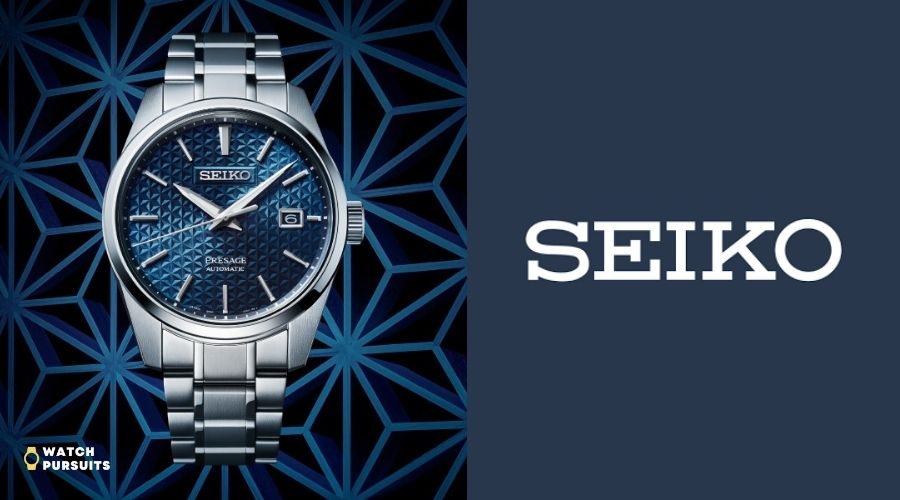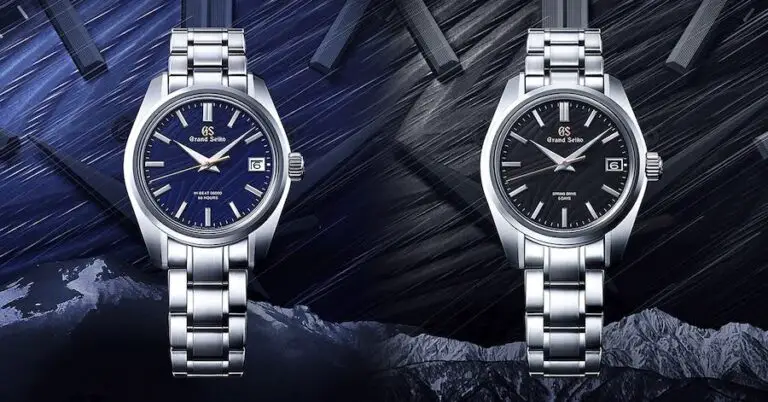Seiko produces watches as humble as under $100, and yet they also make the luxury Credor and Grand Seikos. But their place of origin has always been clouded in mystery. Where are Seiko watches made?
Seiko produces watches in-house in Japan, China, Malaysia, and Singapore. Japan manufactures premium and luxury pieces such as the Grand Seiko and Prospex. The other countries produce lower-end watches. Many Seiko customers notice that Japanese made Seiko have better quality.

Read on to explore topics on Seiko’s production, such as the models made and not made in Japan. We also discuss how you can tell if your Seiko is made in Japan and how Japanese-made Seiko tend to be better than those made outside of Japan.
We have also discussed the holding value of Seiko watches, so feel free to click on the link to check out the article.
READ MORE: Is Seiko Better Than Bulova?
Where Does Seiko Make Its Watches?
Seiko makes its watches in Japan, China, Malaysia, and Singapore. In general, Japanese factories produce watches sold at a higher price. Premium and luxury models from Seiko, such as the Grand Seiko, Prospex, or Astron watches, are made in Japan.
Seiko’s website shows that Seiko makes its watches in Japan, China, Malaysia, and Singapore.
An unconfirmed source from Seiko indicates that watches below 90,000 Yen (roughly $700 today) are likely to be produced and assembled outside of Japan.
Watches priced between 90,000 to 250,000 Yen (roughly $700 – $1950) have parts made outside Japan but assembled in Japan. Anything higher than 250,000 Yen ($1950) is produced and assembled in Japan in full.
| Watch Price | Likely Production |
| Under $700 | Produced and assembled outside Japan |
| $700 – $1950 | Produced outside Japan, assembled in Japan |
| Above $1950 | Produced and assembled in Japan |
This is understandable as Japanese labor costs are higher. So Seiko would need to ensure its Japanese plants produce watches with a higher profit margin.
The same source also indicated that the Chinese factory is mainly responsible for watch parts production. In contrast, Malaysian and Singaporean factories conduct both production and assembly jobs.
Seiko’s Malaysian production facility is at Johor Bahru, Johor state. This production plant makes watch parts for Seiko, such as watch casing, rotor magnets, and other precision watch parts.
This plant is also known to produce premium watches for the export market to Japan, Hong Kong, and China, starting from about $600.
Seiko’s Singapore production facility is at Marsiling, Singapore. The plant is known to be producing and also assembling watch movements. The plan makes both automatic and quartz movements.
Seiko’s Chinese production plant is in two cities, Dalian and Guangzhou. Little is known about the operation in the Dalian plant, aside from it producing ‘watch parts.’ The plant started operations in 1989 and underwent an extension in 2003 to allow it to increase production.
The Guangzhou plant started operation in 2012 after consolidating productions from many smaller makers from around Guangzhou, Shenzhen, and Hong Kong.
Where Are Seiko’s Factories in Japan?
Seiko’s Japanese production studio is in Morioka, Iwate prefecture, and Shiojiri, Nagano Prefecture. The Morioka studio is better known as the Shizukuishi studio. It produces high-end mechanical watches such as Credor and Grand Seiko. The Shiojiri studio makes movements for Grand Seikos, and Seiko Astron GPS Solar Watches.
Seiko’s Japanese production facilities are mainly in these two areas:
Morioka, Iwate Prefecture: This workshop is also known as the Shizukuishi studio. The workshop is making high-end mechanical watches such as Credor, Grand Seiko, and Prospex.
The studio also hosts a public gallery, where visitors can learn about the history of Grand Seiko and enjoy the view of the stunning Mount Iwate. The view has been said to have inspired many of Seiko’s beautiful watches.
Shiojiri, Nagano prefecture: This workshop is also known as Shinshu studio. It is known for producing a wide range of watches. Movements such as Seiko 9F quartz and Spring Drive movements used in Grand Seikos are made here.
The same workshop also produces the dial for Seiko Credor watches and Seiko Astron GPS Solar watch lines. The watch line comes with an antenna that automatically adjusts to time zones.
ALSO READ: Types of watches

How Do You Know If A Seiko Watch Is Made In Japan?
You can tell if your Seiko watch is made in Japan by the model number or by looking for the ‘Made In Japan’ label on the watch. If a model number has the letter’ J,’ the watch is made in Japan. If your watch has a ‘Made In Japan’ label, it will likely be made in Japan.
There are several ways you can tell if your Seiko is made in Japan, although there are no guarantees that your watch is really made in Japan.
The first is to look at the model number of your watch. In many cases, you will notice the letter ‘J’ or ‘K’ on the serial number. For example, the Seiko SKX007J or SKX007K dive watches.
If you see the letter J, the watch is made in Japan. The watch is made outside of Japan if you see the letter K.
Another more straightforward way is to just look at your watch dial. If the watch is made in Japan, you will see a ‘Made In Japan’ label.
Seiko usually prints the label on the left and right of the six o’clock hour marker, almost similar to how ‘Swiss Made’ labels are placed.
The rule for the term Made in Japan applies similarly to the ‘Swiss Made’ label, in that there are rules to follow before a watch can have that label.
However, the label ‘Made in Japan’ can be confusing and misleading to some. This is because to qualify for the label, the product has to either:
- Be made in full in Japan. Or,
- Be made outside of Japan by a Japanese firm and overseen by a Japanese National

Seiko can produce and assemble a watch in Malaysia yet still qualify for the ‘Made in Japan’ label.
‘Swiss Made’ is a lot more stringent. To qualify for the ‘Swiss Made’ label, a watch has to:
- Have 60% of its production in Switzerland
- Use a Swiss movement
- Be encased and inspected in Switzerland.
This is why you would need to take ‘Made in Japan’ with a pinch of salt, that your Seiko might not even have been in Japan in the first place.
However, understand that Seiko watches are produced in-house entirely, with high-quality standards.
It does not matter the origin of the parts of a Seiko watch, as the quality standards will ensure your watch is in its best condition when you purchase it.
Is Japanese Seiko Better?
Japanese-made Seiko carries an impression of better quality and fitment. However, this could be due to Japanese factories producing and assembling more premium watches than others. Japanese Seiko is also better because it fetches a higher price of about 10% in both new and used markets.
If we take the example of the Seiko SKX007, the J variant (those made in Japan) are priced higher than the K variant by about 10%.
The pricing difference happened when the watch was still sold brand new, and the pricing difference remains in the used market.
In fact, since SKX007 was no longer produced by Seiko, demands have grown much for the J variant, resulting in an even higher price difference between SKX007J and SKX007J.
Watch enthusiasts mention specific quality issues with non-J-variant Seiko SKX. The unidirectional rotating bezel does not turn as smooth, and the zero marker on the bezel ring does not meet properly with the 12 o’clock position on the watch dial.
Where Are Grand Seiko Watches Made?
Grand Seiko watches are produced in the Grand Seiko Shizukuishi studio in Iwate, Japan. This production facility produces the 9S movement parts and conducts assembly and quality assurance checks.
The Grand Seiko Shizukuishi studio is an addition to Seiko’s already present Shizukuishi studio. It was completed in 2020 to celebrate the 60th anniversary of the Grand Seiko.
The studio’s design is the brainchild of Kengo Kuma, also known as the designer of the national stadium 2019 for the Tokyo Olympics.
The studio does have a gallery open for the public to visit. Aside from seeing and learning about Grand Seiko’s history, you can also enjoy the view of Mount Iwate from the public gallery.

Are Seiko Watches Hand Made?
Seiko’s watches are not entirely handmade but with many pieces of machinery used to assemble them. Luxury Seiko watches such as Credor, or Grand Seiko are given a lot more hand-assembly and artisanal treatment than regular Seiko Watches.
Common Seiko models are either full machine assembled or involve minimal work by human technicians to complete their assembly. This helps Seiko keep costs low and puts watches into the hands of many.
Luxury watches from Seiko those from Credor or Grand Seiko are usually hand-assembled. Some of the dials are hand-painted and prepared before installation.
It is known that during the production of Grand Seiko, the following process involves manual work by Seiko artisans:
Cases: They are usually finished by hand by individually holding them to the polishing machine. Zaibatsu polishing technique is used here.
Movements: They are hand-assembled by master watchmakers, all certified by Seiko. These watchmakers may work either individually or in teams. The watchmakers assemble both automatic and quartz movements by hand.
Dials: The indexes on the dial are applied by hand. Each dial is stamped individually by hand as well. Some dials are also hand-painted, which means every dial has a unique pattern.
Indexes: The diamond-edged cutting machine used to prepare the indexes is operated by hand. Each individual index is inspected using a mirror.
Heat-Blued Hands: Each watch hand is heated individually by manually placing them on a hot plate and removed once the desired color is reached.
ALSO READ: What Makes A Watch A Luxury Watch
